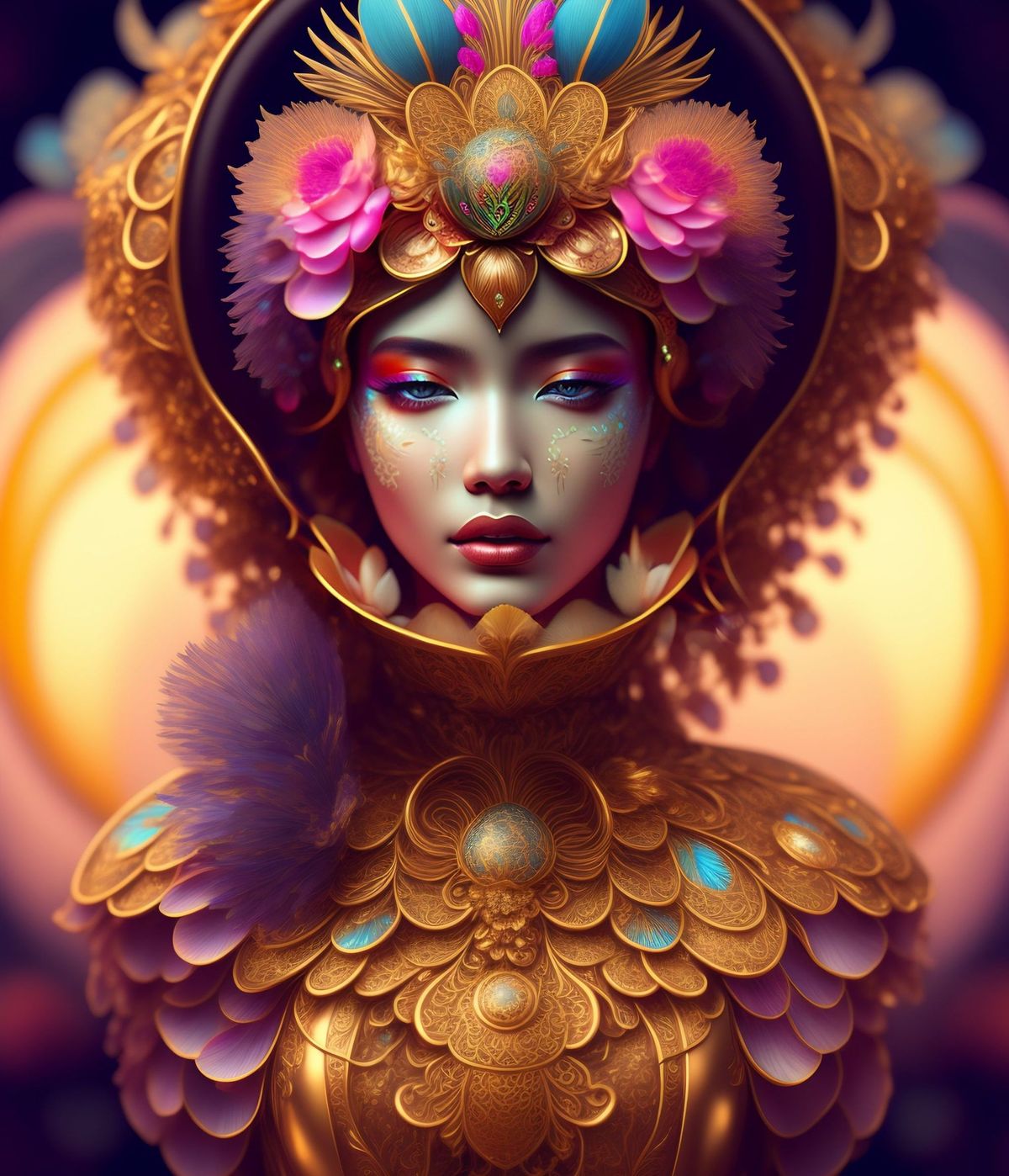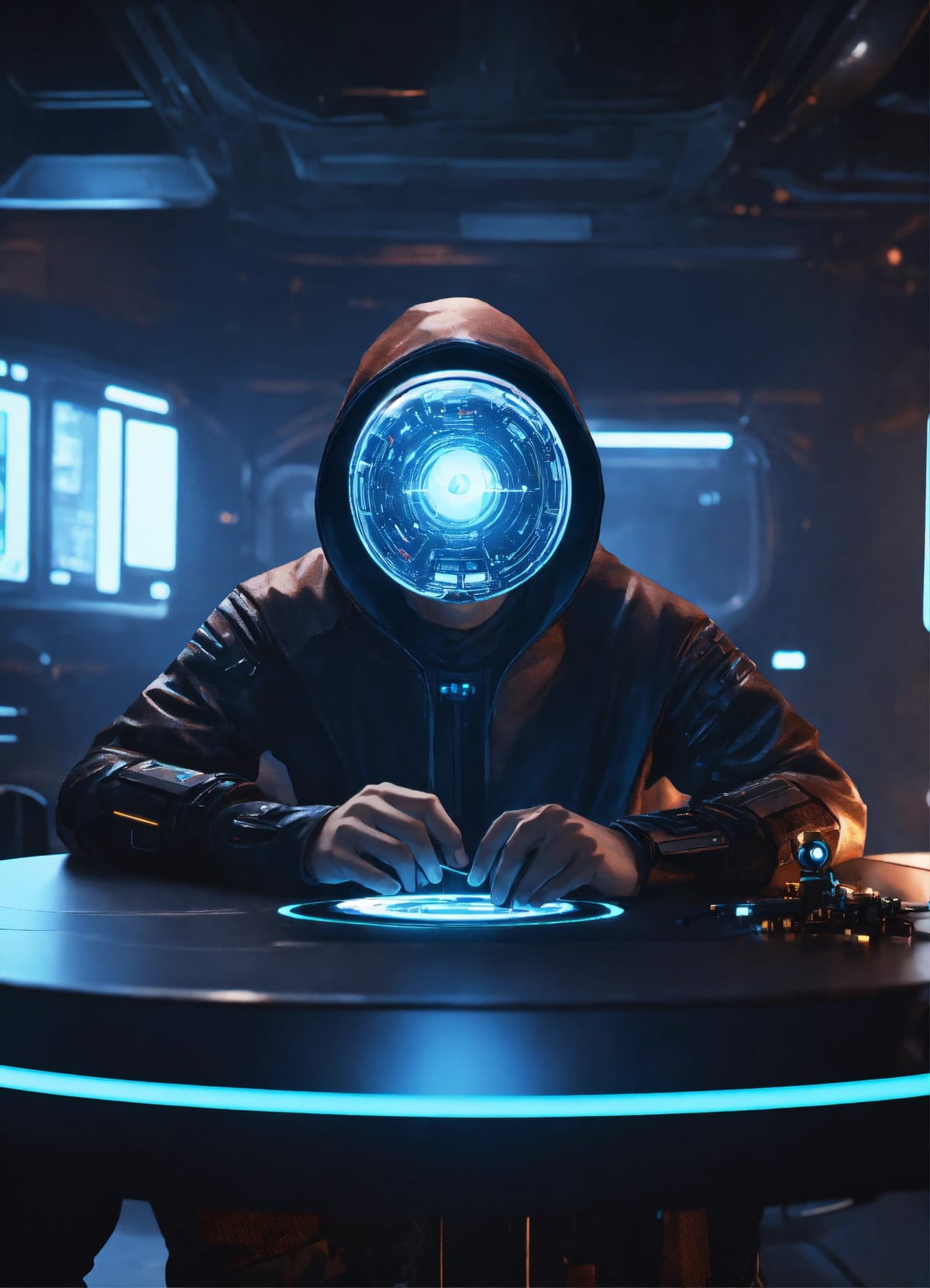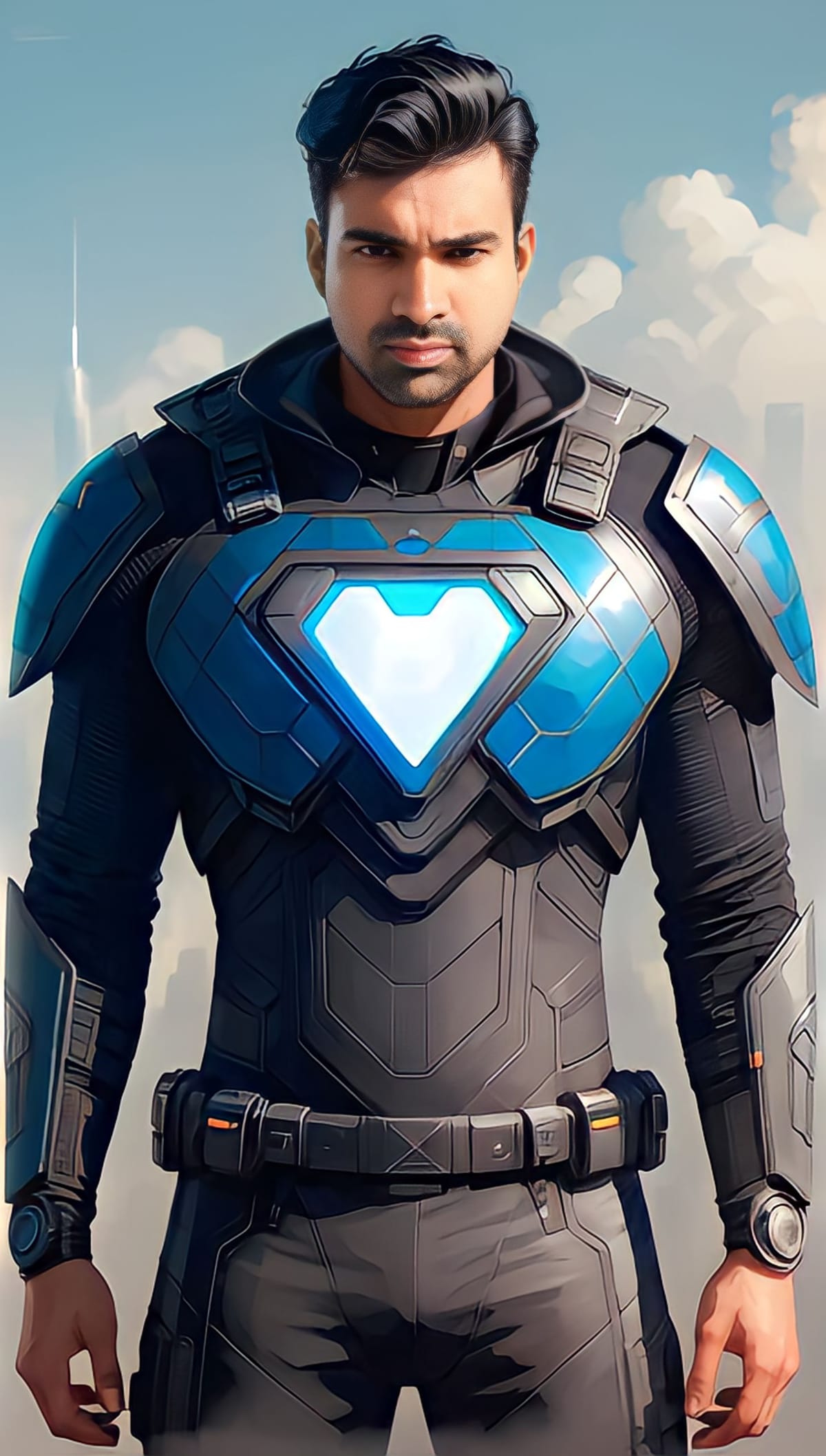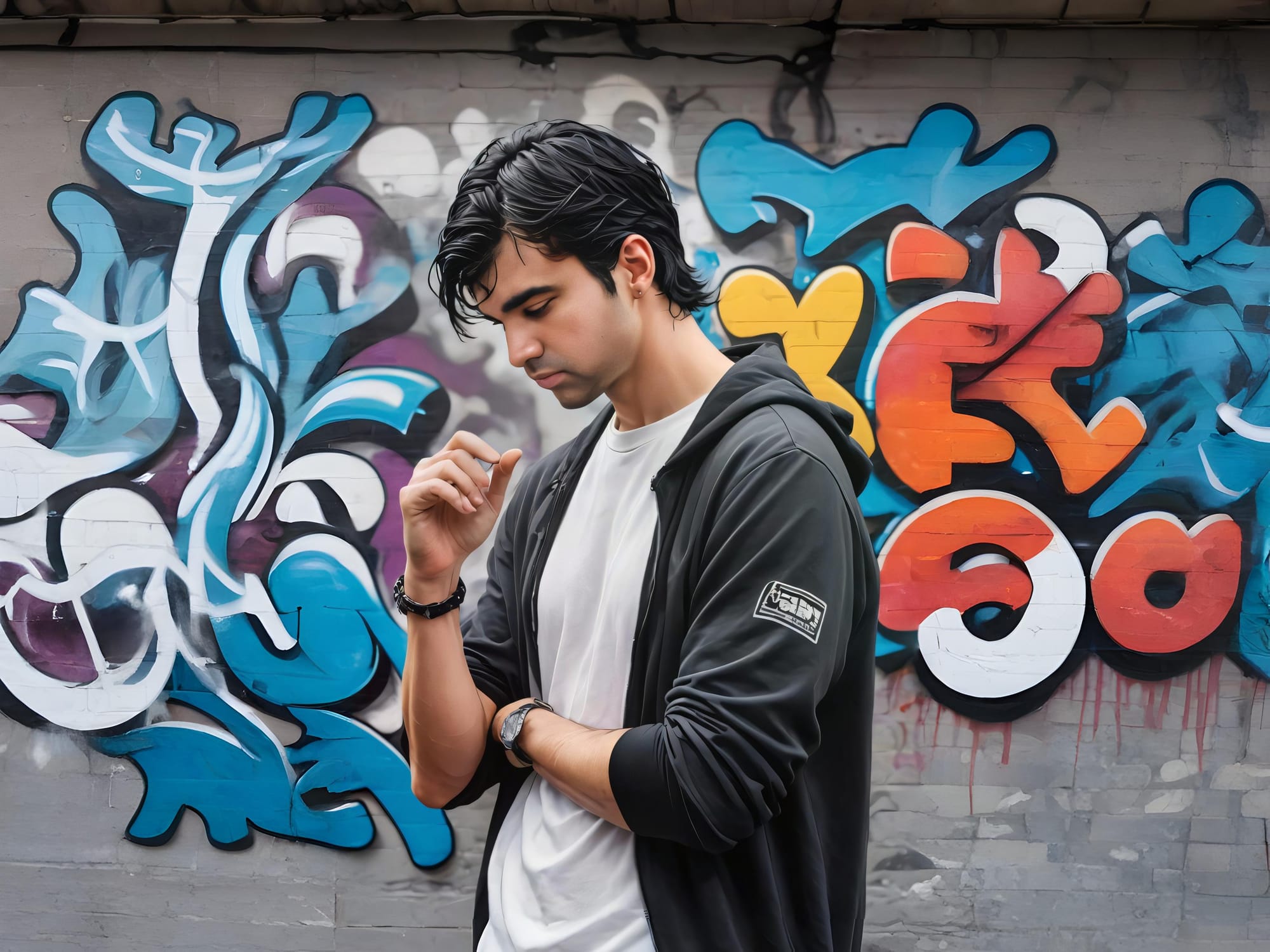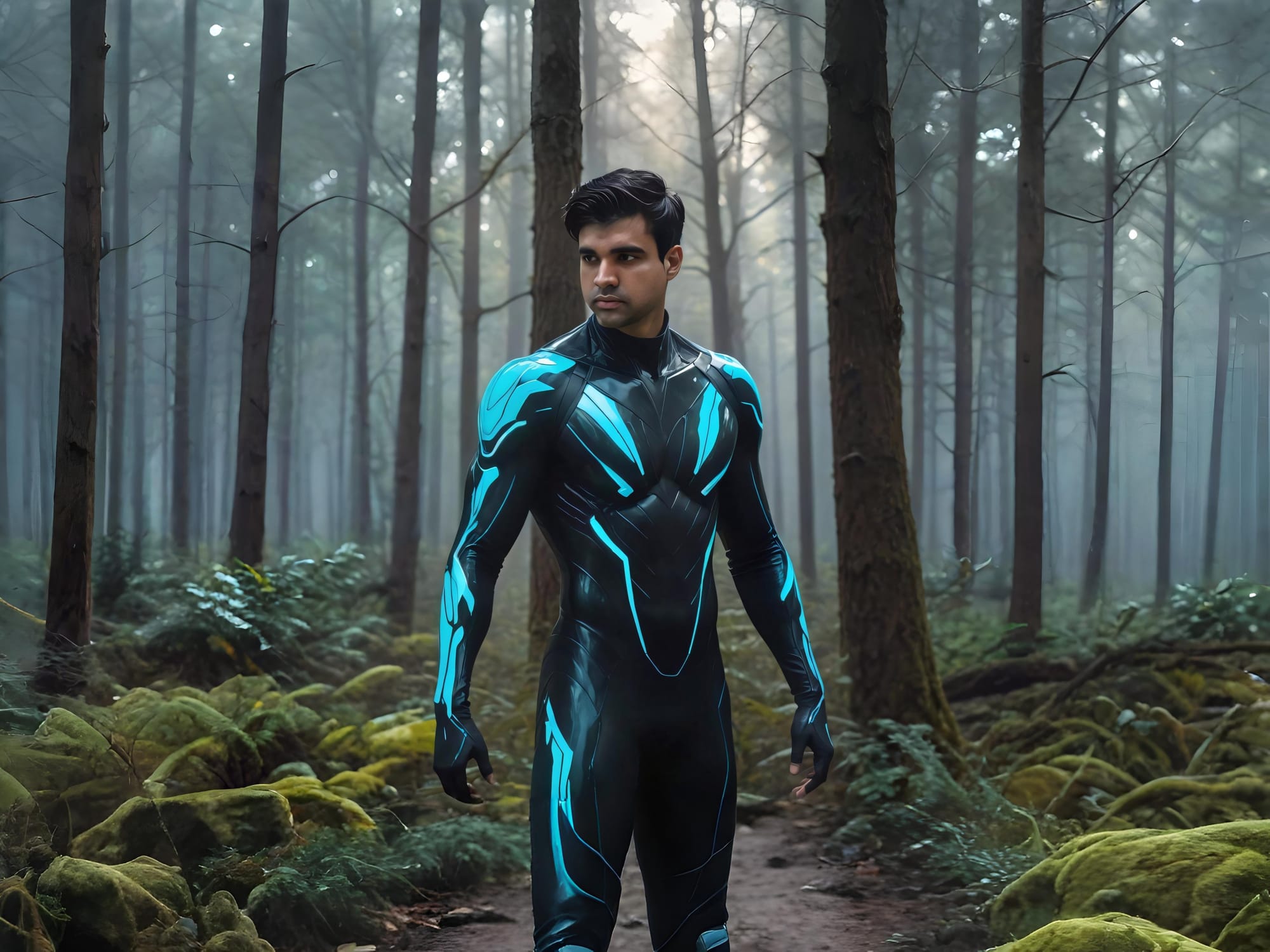The VR Revolution in Sundarapur and Veeranagari
One fine day, a mysterious traveller presented him with a curious device, a VR headset, claiming it could show realms beyond imagination.
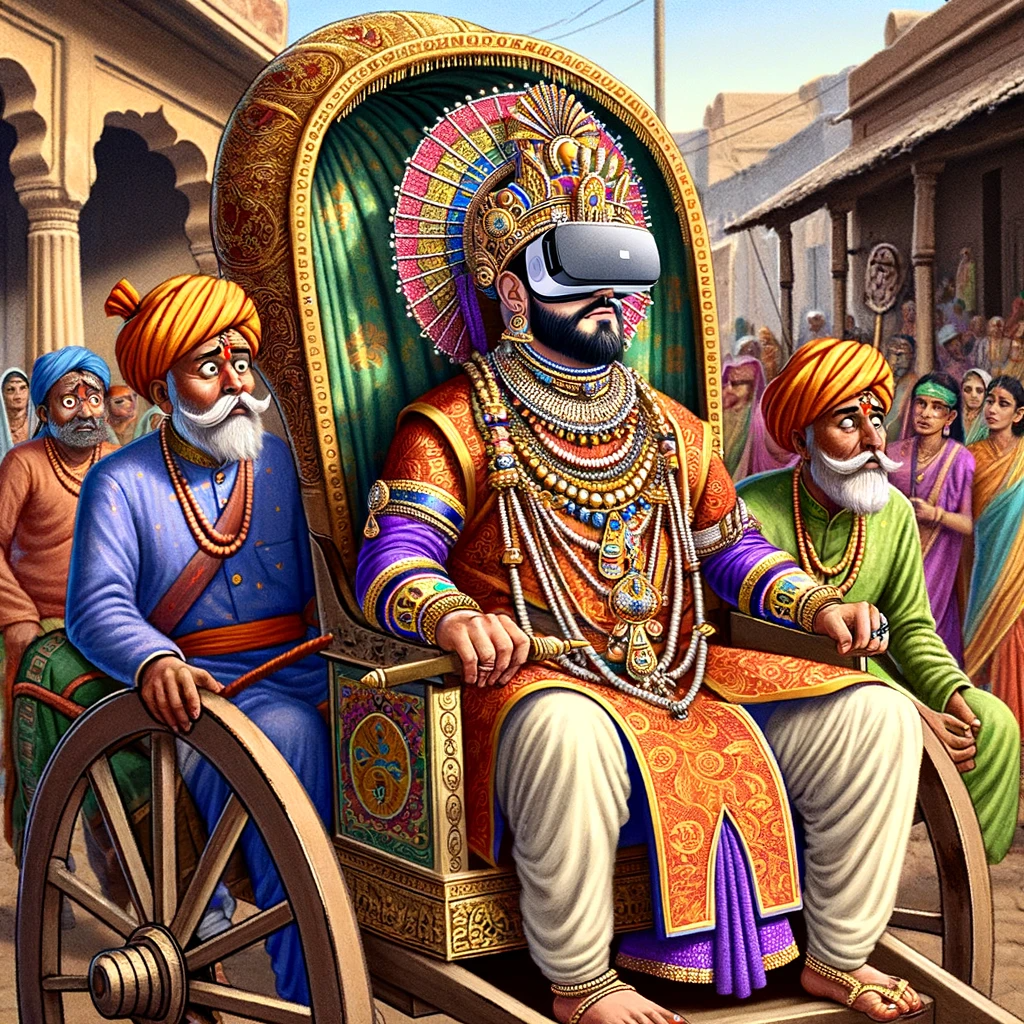

Imagine a world where Virtual Reality (VR) technology existed during the era of Indian kings and wartime. Let's embark on a whimsical journey through the fictional villages of Sundarapur and Veeranagari, ruled by the benevolent King Aakarsh and the valiant King Veerendra, respectively.
The VR Revolution in Sundarapur
In the picturesque village of Sundarapur, King Aakarsh was known for his love of art and culture. One fine day, a mysterious traveller presented him with a curious device, a VR headset, claiming it could show realms beyond imagination. Intrigued, King Aakarsh donned the device and was instantly transported to a world of vibrant landscapes and mythical creatures. He was so mesmerized that he ordered a VR device for every citizen of Sundarapur.
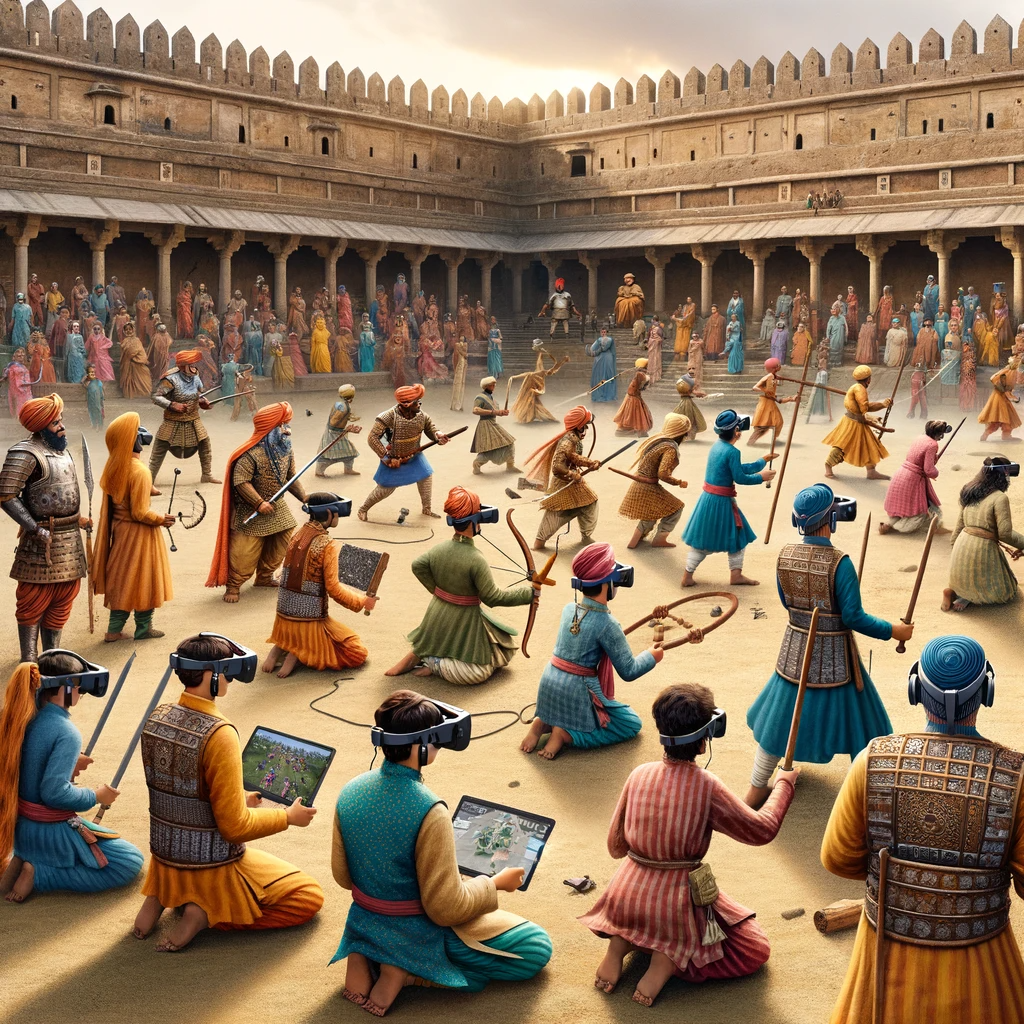
Imagine the sight - farmers ploughing fields while riding virtual dragons, artisans sculpting while exploring virtual art galleries, and even the royal cook preparing lavish feasts inspired by virtual culinary tours.
Sundarapur soon became a hub of creativity, with people gathering in the evenings to share their virtual adventures.
The Tactical Edge in Veeranagari
Meanwhile, in Veeranagari, known for its mighty warriors, King Veerendra stumbled upon VR technology when seeking new strategies for warfare. He envisioned using VR for tactical training, immersing his soldiers in various battle scenarios without the risk of injury. The soldiers trained in virtual battlegrounds, facing everything from mountainous terrains to desert ambushes.
King Veerendra, a strategic genius, even started using VR to plan city defences, leading to some hilariously over-the-top fortifications involving moats with virtual sea monsters and walls that appeared insurmountable.
Even the queen of Veeranagari was engrossed in virtual reality and she wore the device all day long!
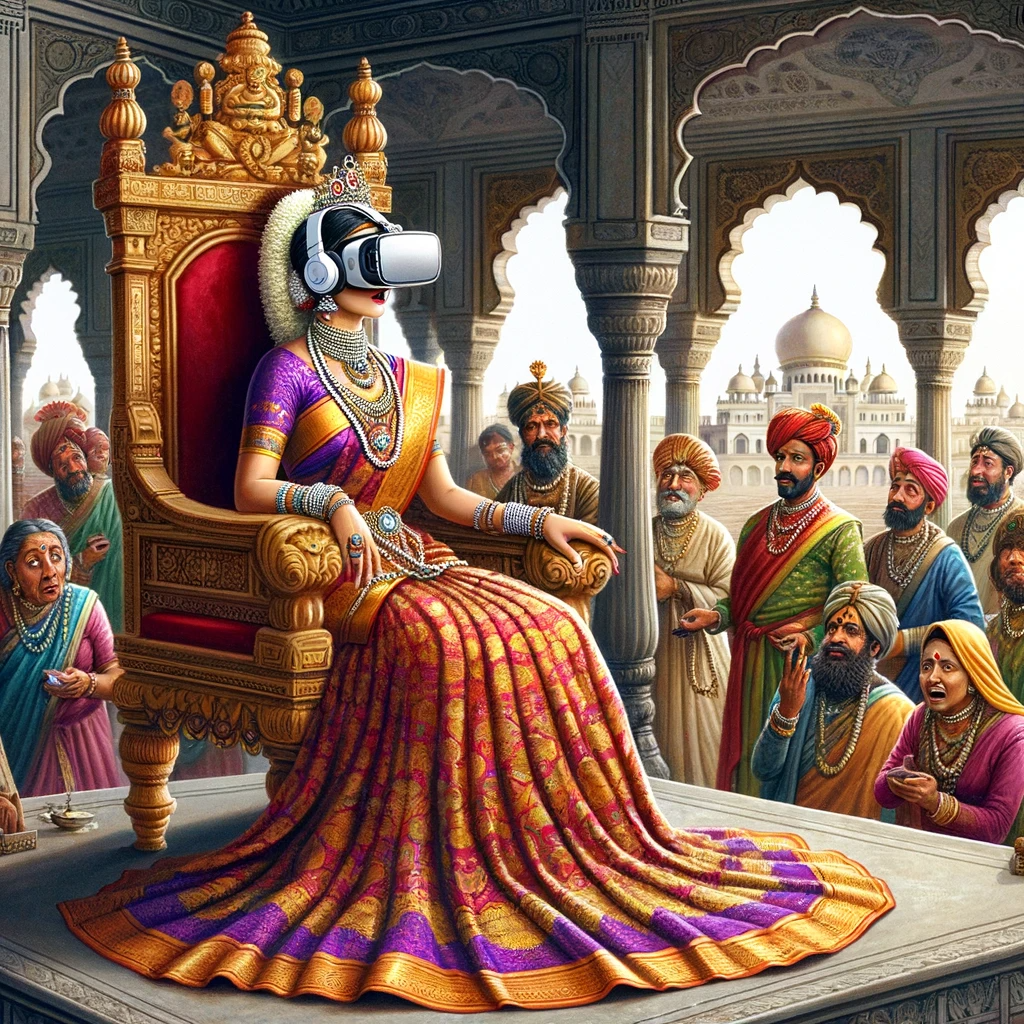
The Hilarious Misadventures
The introduction of VR brought its share of comical incidents. There was the time when King Aakarsh, deeply engrossed in a virtual wildlife safari, wandered into the village square, causing a spectacle as he tried to 'pet' a virtual lion.
Or when a group of Veeranagari soldiers, training in a virtual forest, accidentally marched into a real forest and got utterly lost, only to be found arguing with a bewildered shepherd about the 'glitch' in their scenery.
King Veerendra, with his newfound treasure, set up the first VR training grounds in the heart of Veeranagari. The training area was a marvel, equipped with dozens of VR stations, each capable of simulating a variety of battle conditions. From the snowy peaks of high mountains to the scorching sands of vast deserts, soldiers could experience and adapt to any battlefield.
The warriors of Veeranagari, known for their physical prowess and battle skills, were initially sceptical of this new method. Accustomed to the weight of real swords and the heft of shields, they found the virtual environment disorienting. However, under the guidance of King Veerendra and a team of VR experts, they soon began to see the benefits. They could now engage in battles against formidable virtual enemies, honing their skills without the risk of injury or death.
As the soldiers trained, something remarkable happened. They started developing new tactics, impossible to practice in real life due to their risky nature. They experimented with unconventional formations and strategies, which, in the virtual world, showed promising results. King Veerendra watched with pride as his army evolved, becoming more versatile and adaptable.
The Great VR Summit
The climax of this tale was the Great VR Summit, where Kings Aakarsh and Veerendra met. The summit was a sight to behold, with King Aakarsh showcasing virtual art and King Veerendra demonstrating military simulations.
However, the highlight was when both kings, wearing their VR headsets, accidentally bumped into each other, leading to a moment of pure comedic gold as each king tried to navigate the virtual and real worlds simultaneously.
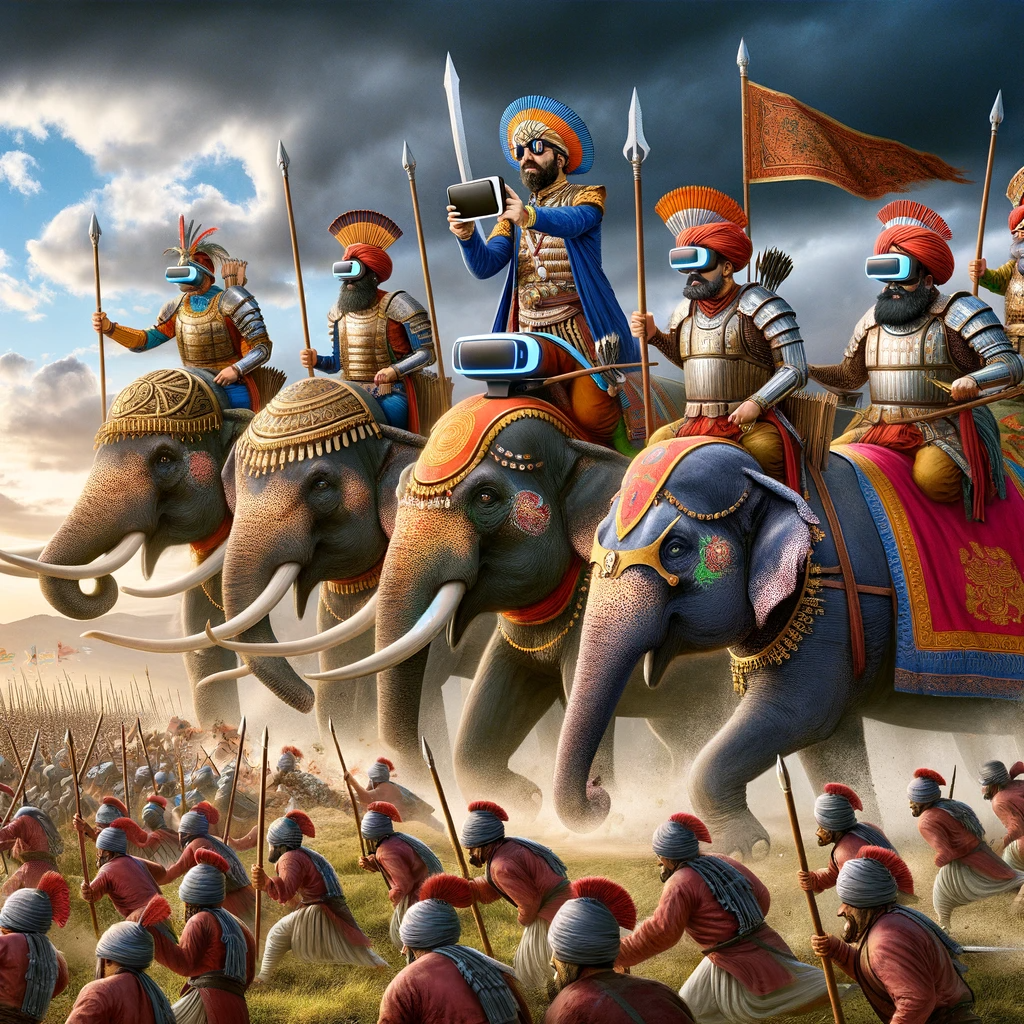
Epilogue
As the sun set on the VR-infused era of Sundarapur and Veeranagari, the villages returned to their normal routines, albeit a bit more enriched by their virtual experiences.
The VR devices were enshrined as artefacts of this whimsical time, reminding future generations of the time when their kings saw beyond their kingdoms, into worlds unimagined.
As time passed, the warriors of Veeranagari became renowned not just for their strength and courage, but for their adaptability and innovative tactics. Other kingdoms began to take notice, and soon, emissaries arrived in Veeranagari, seeking to learn the secrets of VR training.
King Veerendra, proud of his achievements, decided to share his knowledge, believing that it would lead to a future where wars were fought and won through strategy and skill rather than sheer force and numbers.
A New Dawn for Veeranagari
Veeranagari, once known solely for its mighty warriors, became a centre of learning and innovation. The VR technology, initially used for war, found applications in various fields, contributing to the kingdom's prosperity and the well-being of its people.
King Veerendra, hailed as a visionary, looked upon his kingdom, a land where the echo of VR-assisted swords clashing in training grounds symbolized not just the strength of arms but the power of progress and adaptation.
Veeranagari stood as a testament to the fact that even the most traditional of societies could embrace change and use it to forge a better future.
Check out these amazing content from Bookspotz:



